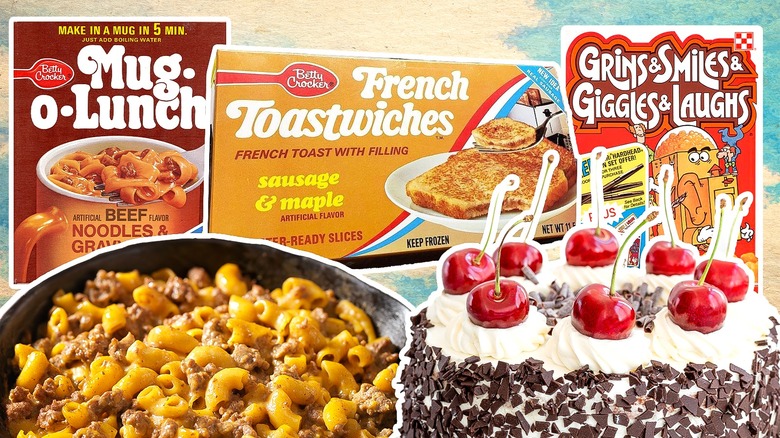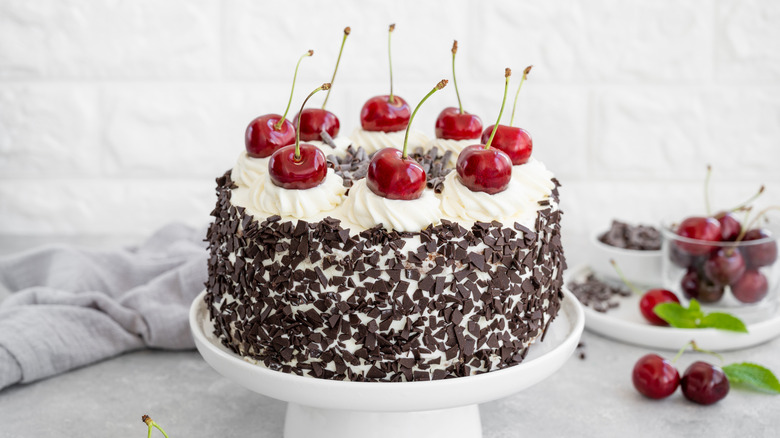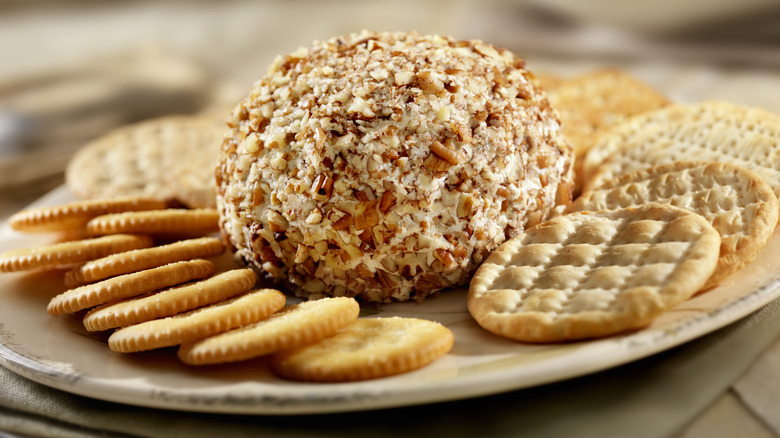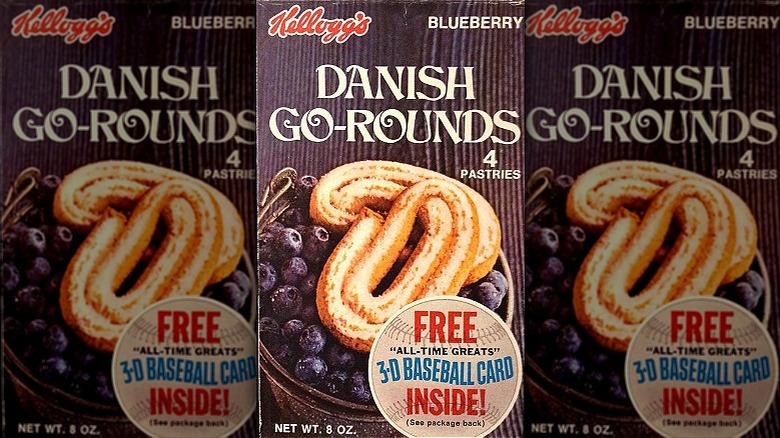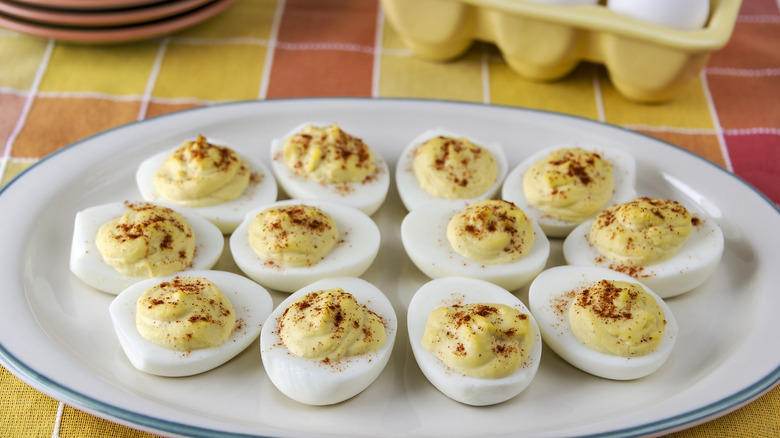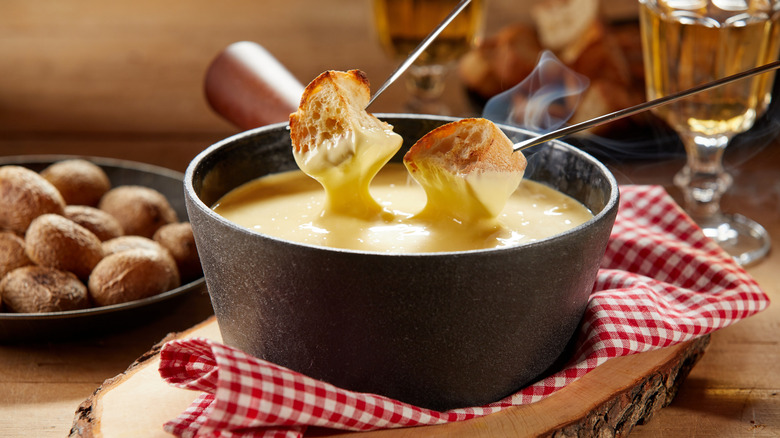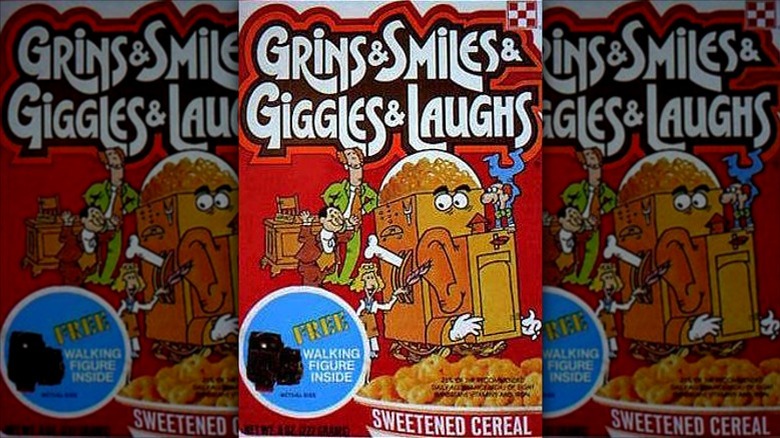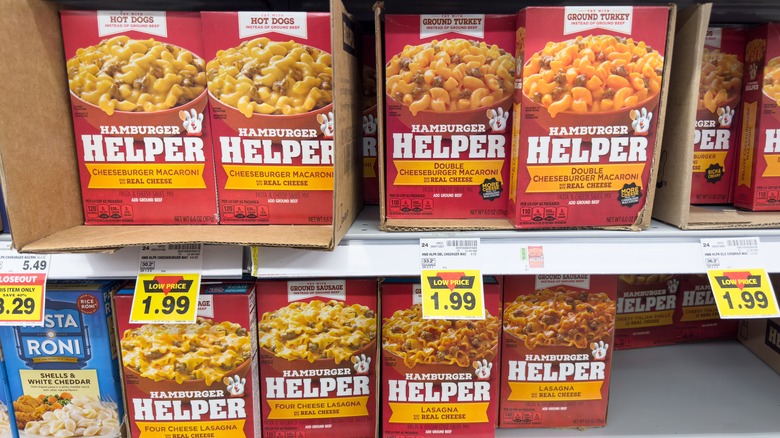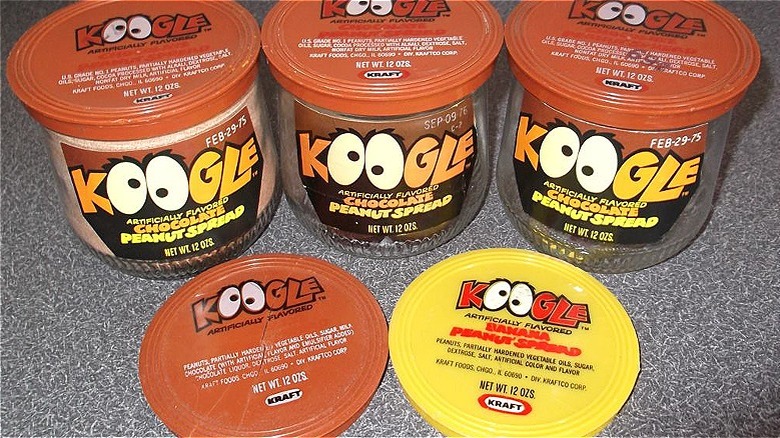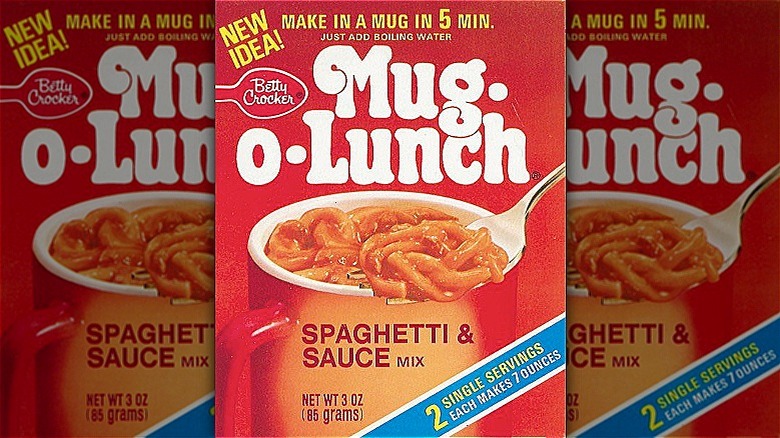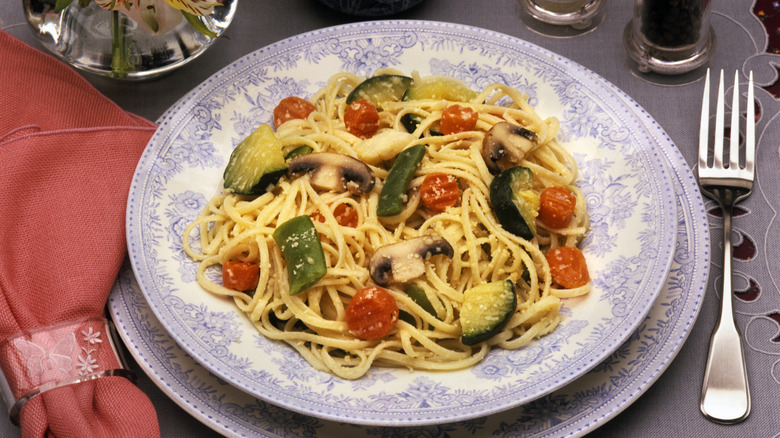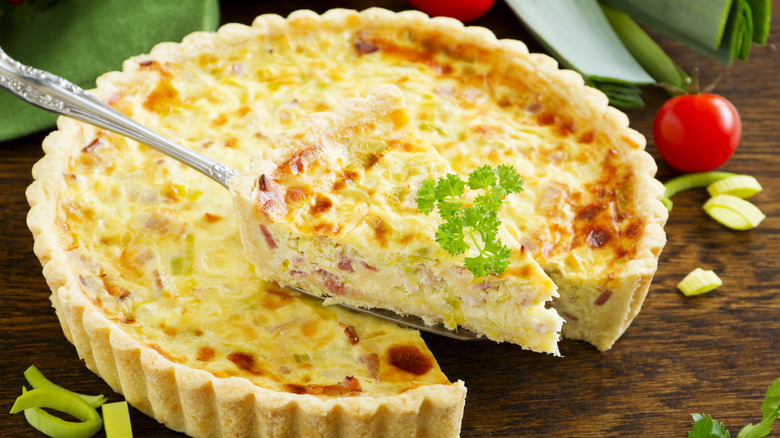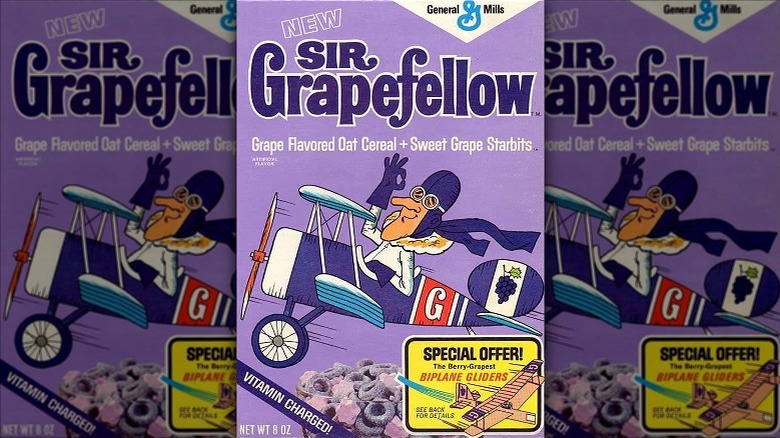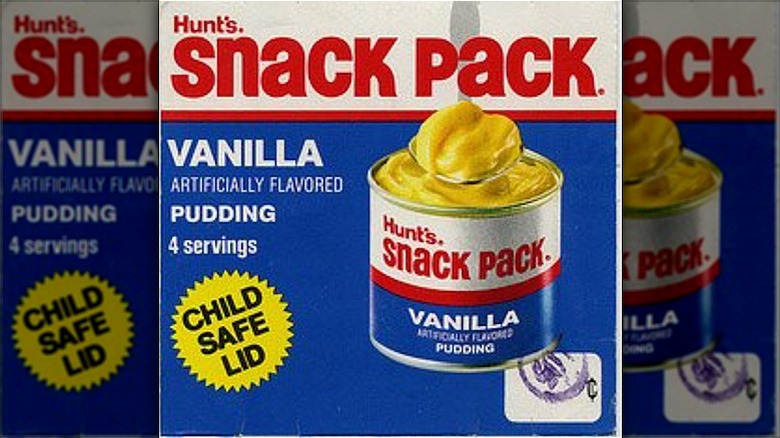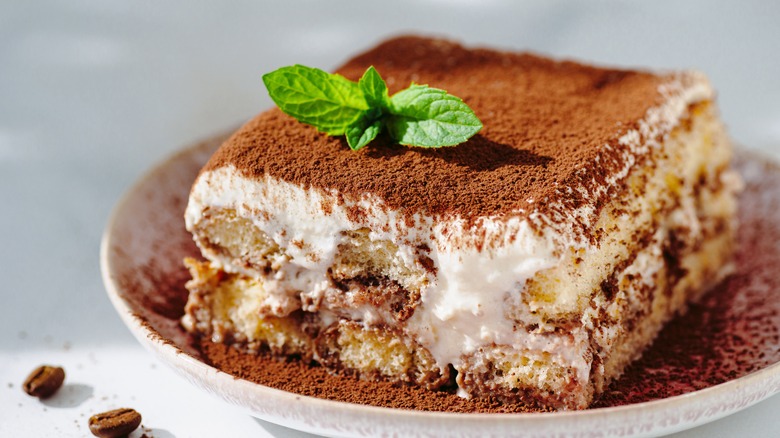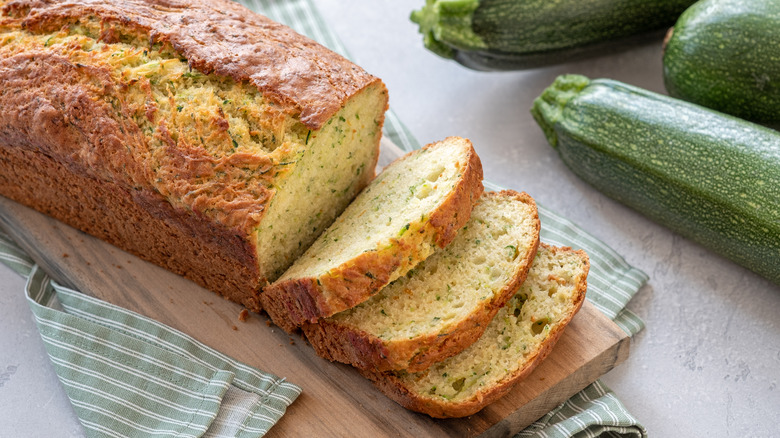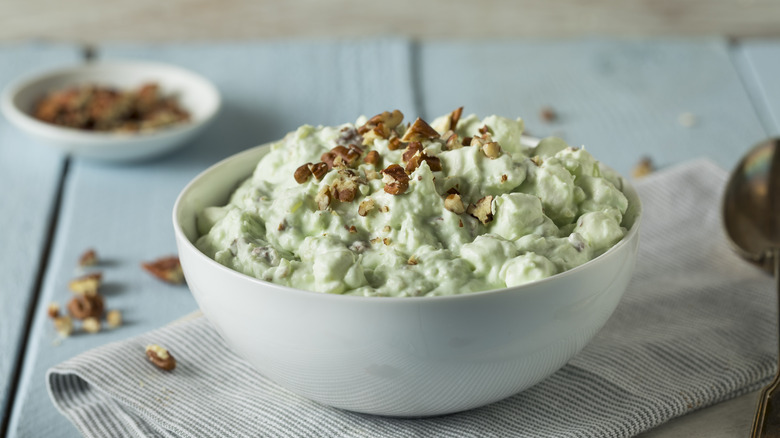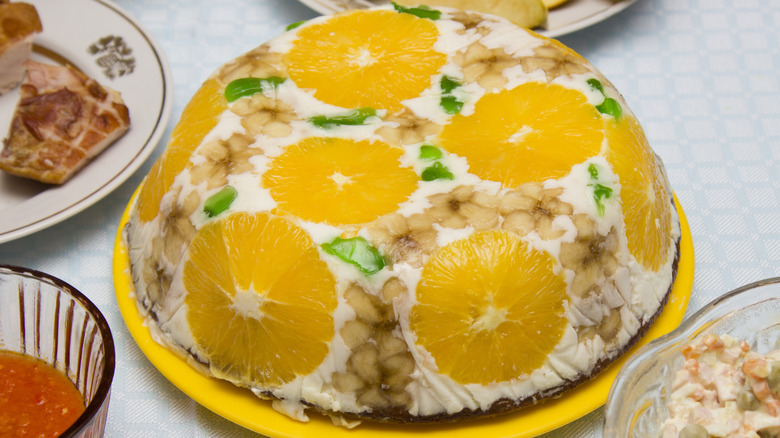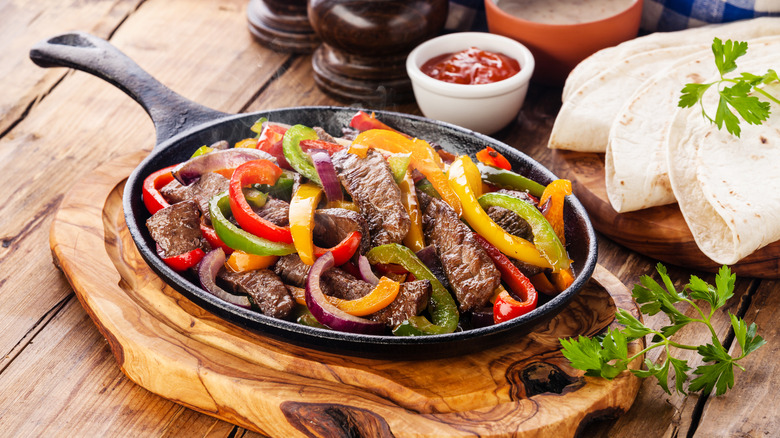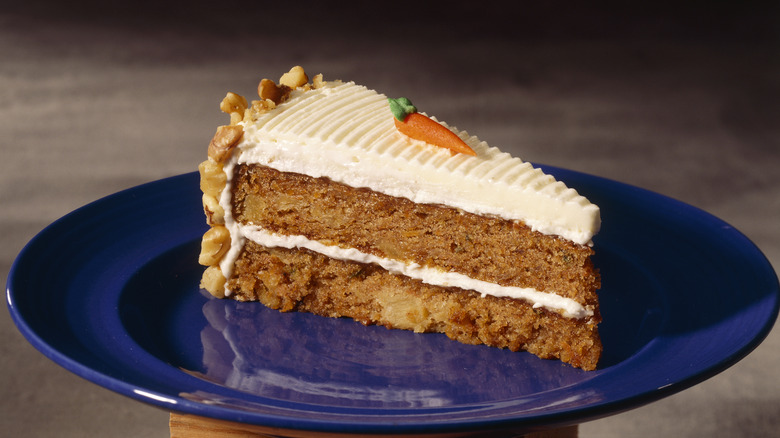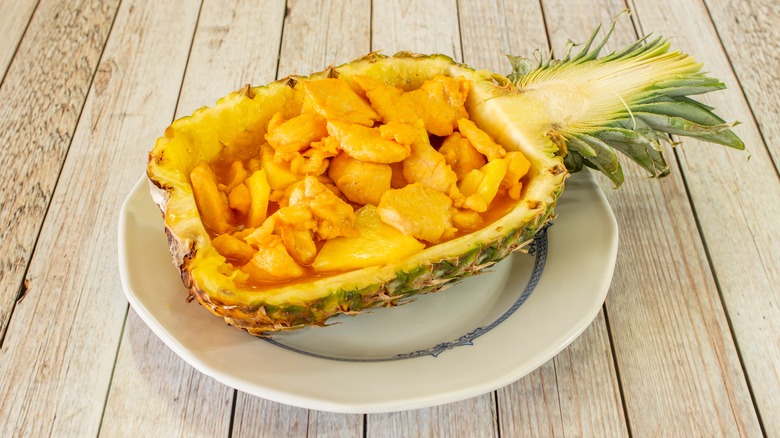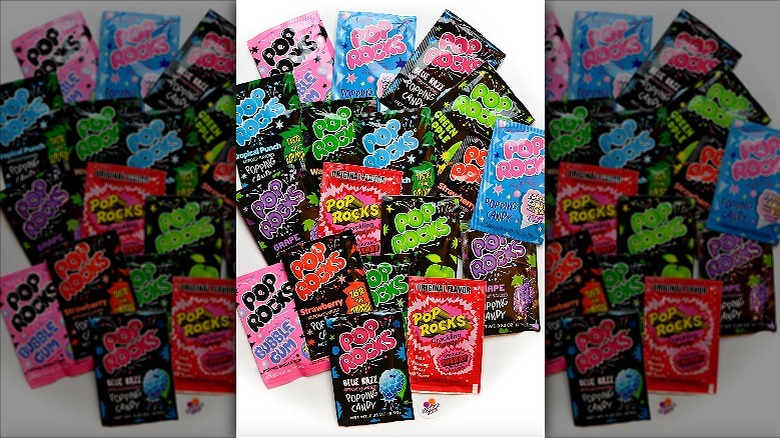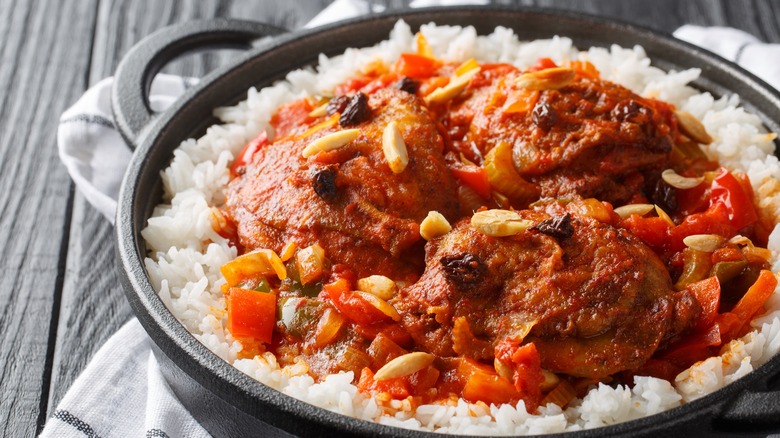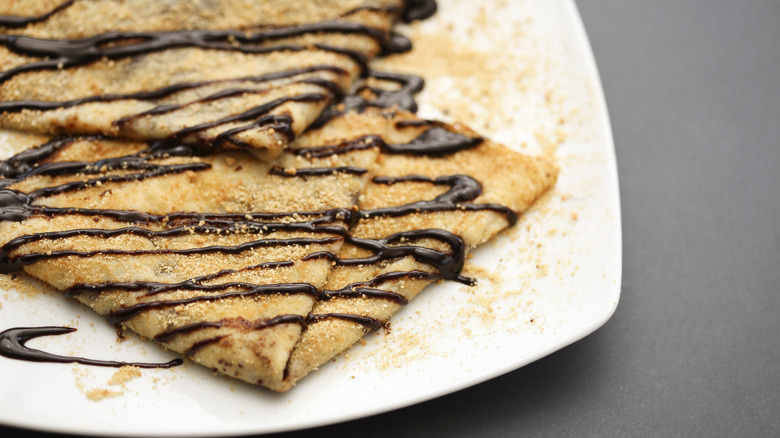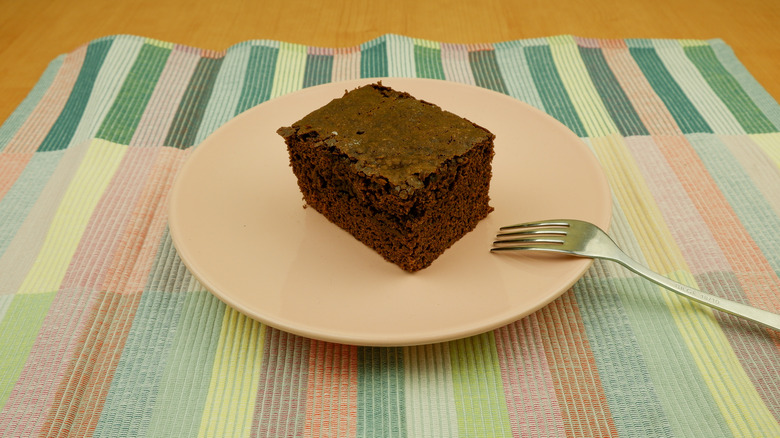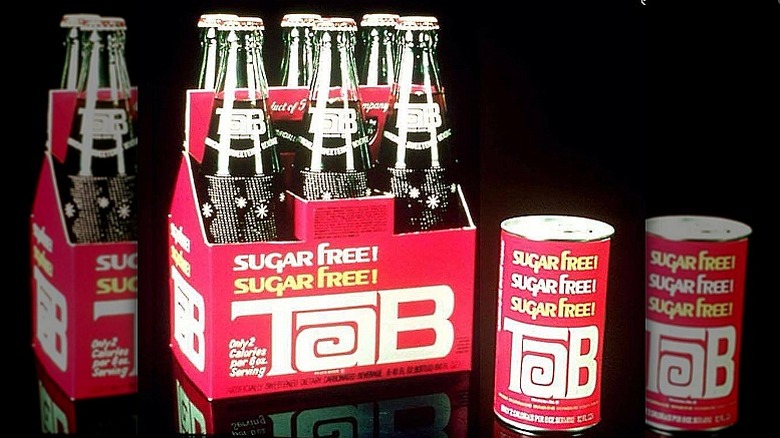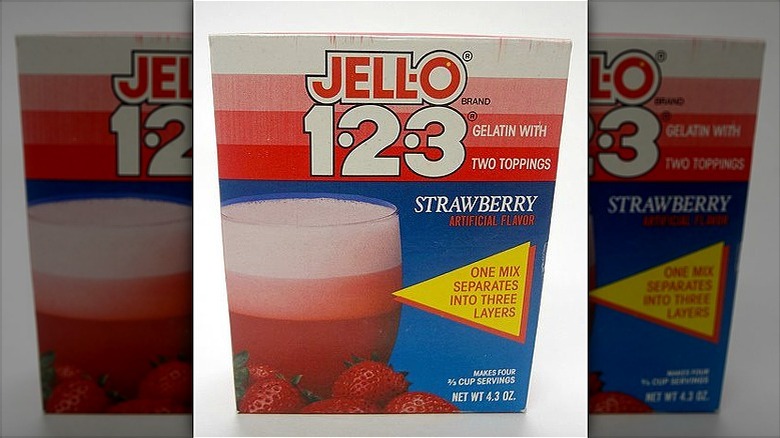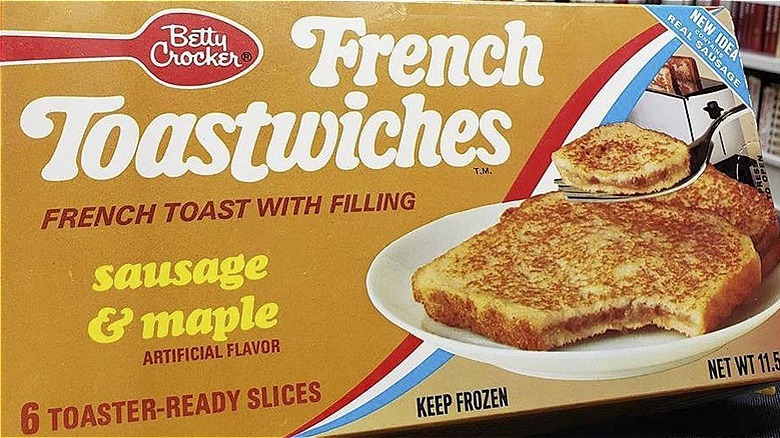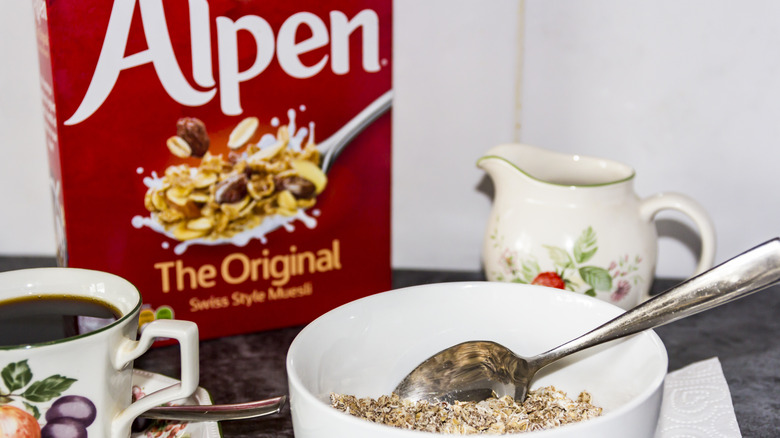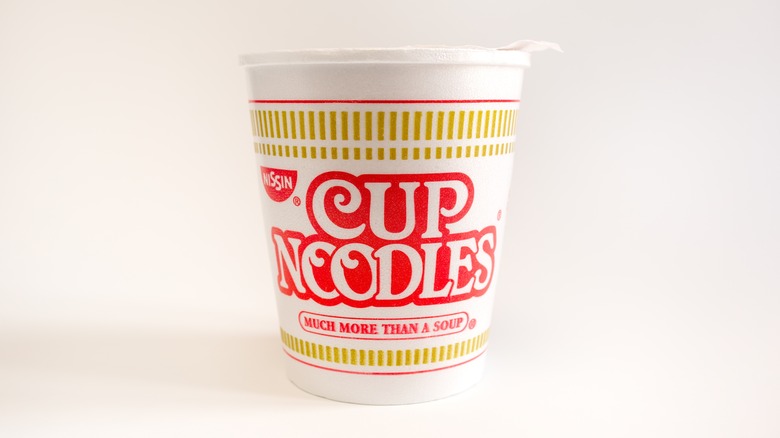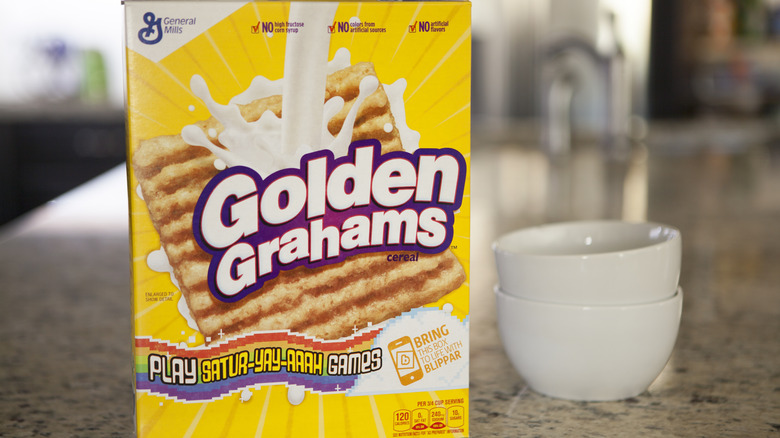If You Grew Up In The 1970s, You'll Definitely Remember These Foods
The 1970s was a decade defined by social and political upheaval, punctuated with scandal. Monumental cultural shifts were represented by movements, including women's liberation, environmental activism, and gay rights. Meanwhile, technology and music were fueled by speed, novelty, and individualism. This permeated the culinary scene in myriad ways.
Just as the end of the 1960s brought with it a renewed enthusiasm for the slow cooking of French cuisine introduced by the legendary Julia Child, the innovation of the microwave and pre-packaged foods expedited food preparation, enabling women to escape the confines of the kitchen to pursue other interests. And the popularity of communal dining and the cocktail party created a craze for anything that could be picked up, dipped, molded, or had a Polynesian flair.
If you grew up in the '70s, you may remember these food sensations. Some will fill you with nostalgia, others with dread. But they will all remind you of the roller coaster that was, as Tom Wolfe said in U.S. History, the "Me Decade." Let's take a walk down memory lane together.
Black forest cake
Also known as a Schwarzwälder Kirschtorte or Black Forest cherry cake, this multi-layered chocolate sponge cake with cherries, whipped cream, and a chocolate shaving topping originated in the Black Forest region of Germany in the 16th century. The cake utilizes copious quantities of cherry schnapps called Kirschwasser, which gets brushed on the sponge cake and incorporated into the whipped cream frosting.
With a renewed focus on cooking inspired by Julia Child's "Mastering the Art of French Cooking" and the popularity of entertaining in the 1970s, this cake became an instant classic in the U.S. All it required was patience, the ability to follow a recipe, and copious quantities of liquor.
Cheese balls
In keeping with the popularity of entertaining and finger foods, the cheese ball or cheese log became one of the signature party dishes of the 1970s. The first iteration of a cheese ball was purportedly invented in 1801 by a Massachusetts farmer tasked with gifting it to President Thomas Jefferson. This fromage sphere was a behemoth, weighing in at 1,235 pounds.
Typical cheese balls of the '70s were a bit more modest in size, often fashioned by combining softened cream cheese, blue cheese spread, chopped sweet pickle, and minced onions that were mixed and rolled into chopped pecans for a delightful crunchy coating. Once allowed to sit in the refrigerator, this cheesy masterpiece would get served with crackers for the ultimate party favor.
Danish Go-Rounds and Danish Rings
Introduced by Kellogg's in 1968, Danish Go-Rounds grew out of the success of the Pop Tart. Advertised as the toaster pastry all grown up, the product was not too dissimilar from a Pop Tart, with various fruit fillings being extruded into a circular pastry, wound around itself like a paperclip, and topped with icing. Flavors included strawberry, blueberry, and cinnamon.
Though marketed as a quick alternative to a Danish pastry that could be served at Kaffeeklatsches, or gatherings where women would visit and drink coffee together, they never caught on, partly because they tended to fall apart in their packaging. By 1977, Danish Go-Rounds were replaced by a similar product called Danish Rings. Instead of the fruit filling being tucked into the pastry dough and then coiled, the shape was created by a stamp impressed into the oval pastry. Sadly these were also discontinued in the 1980s.
Deviled eggs
Also known as salad eggs, eggs mimosa, and dressed eggs, deviled eggs have been a popular appetizer for serving at a gathering since ancient Rome, where boiled eggs would get adulterated with various piquant seasonings. From there, they moved to Spain and across Europe, eventually finding their way to the U.S., presumably with the early colonists. The term, to devil, came to mean to spice something up.
Though a recipe for deviled eggs with mayonnaise appeared as early as 1896 in the Fannie Farmer "Boston Cooking-School Cookbook," its use was uncommon until the 1940s. Deviled eggs experienced their heyday in the 1970s when they became a staple at cocktail parties and gatherings. Their popularity in the '70s is evidenced by inventions like the harvest gold deviled egg Tupperware container, which would have been an indispensable tool in any home kitchen.
Fondue
Though fondue may have originated in Switzerland in the 1800s out of a necessity to use up old aged cheese and stale bread, by the 1930s, the Swiss Cheese Union had set its sights on spreading the tradition abroad. After featuring in the 1964 World Fair in New York City, its popularity skyrocketed. By the 1970s, it was a staple of virtually any cocktail party.
Not only did it fit the sensibilities of the day, where shared dishes were the rage, but it was also a quick and easy recipe for women to throw together for a party when more women were a part of the labor force. And be honest, it is delicious. What could beat a vat of melted cheese with chunks of hearty bread to dip in it? It's like a deconstructed grilled cheese, making it the ultimate finger food fare.
Grins & Smiles & Giggles & Laughs
Premiering in 1976, the Ralston cereal brand introduced a new product called Grins & Smiles & Giggles & Laughs. The crunchy cereal that smiles back at you was a corn-based cereal in the shape of smiley faces. As the story goes, a strange robot-like character named Cecil, featured on the front of the cereal box, would produce this cereal whenever someone made him laugh. That someone included one of four characters — Grins, Smiles, Giggles, and Laughs.
The product was well known for putting prizes within each box, like joke books, stickers, and paint books with paint included. They also offered mail-in promotions for items like t-shirts with Cecil on them. A box of this cereal cost roughly 72 cents back then. Sadly the sugary delight never really took off, and it was discontinued after only a year on the market.
Hamburger Helper
It would be hard to imagine a world without Hamburger Helper, but before 1971, the brand didn't exist. It evolved as a response to increasing beef prices and the difficulty families faced trying to make a pound of beef an economical meal for five hungry humans. When it premiered, there were only five flavors — Beef Noodle, Potato Stroganoff, Hash, Rice Oriental, and Chili Tomato. Within its first year on the market, over one-quarter of U.S. families served it regularly.
By 1977, sales were waning, prompting General Mills to introduce the spokes character named Lefty, a white glove with a clown nose, three fingers, and a friendly face reminding you he will always be there when you need a helping hand. It worked, saving the empire. Today there are over 40 distinct flavors of Hamburger Helper, making it one of the most successful pop culture brands to grow out of the 1970s.
Koogle
Koogle was introduced in 1971 by Kraft Foods. A peanut butter spread similar to Nutella, the smooth condiment didn't make your mouth stick together the way peanut butter did. It came in four flavors — chocolate, cinnamon, banana, and vanilla.
Koogle was incredibly popular with children thanks to its alien-like mascot with a body shaped like a container of peanut butter, four eyeballs, scraggly blue hair, and a giant K that made it look like a superhero. Parents loved it because it enticed picky kids who despised peanut butter to eat the spread. Unfortunately, the product didn't last long, getting axed somewhere in the mid-1970s.
Mug-O-Lunch
In 1977, Betty Crocker jumped on the instant noodle bandwagon by premiering its latest innovation called Mug-O-Lunch. These handy meals came in four flavors — Macaroni & Cheese, Beef Noodle, Chicken Noodle, and Spaghetti. Each package was filled with dried pasta and a flavor packet. All it took to have a quick and tasty meal was to add boiling water and let it sit for five minutes.
From appearances, portions were pretty meager, making us wonder if these disappeared by the early 1980s because the only people these could fill up would be a small child. An adult would need two or three of these to count as a complete meal. Either way, they were definitely revolutionary for their time.
Pasta primavera
While a name like pasta primavera elicits springtime in Italy, this 1970s staple was born stateside. It was the invention of celebrity chef Sirio Maccioni, who created it as an off-menu delicacy at his legendary restaurant, Le Cirque, which opened in New York in 1974.
The dish involved an elaborate tableside presentation where the cooked pasta would be tossed together with freshly cooked mushrooms, broccoli, asparagus, zucchini, and peas and garnished with a tomato concassé, which is a basic tomato sauce, pine nuts, fresh basil, and freshly grated parmesan cheese. The communal nature of this dish was a hit at dinner parties, highlighting its simplicity and delicacy.
Quiche Lorraine
Quiche is a classic French tart filled with egg custard, cheese, various types of meat, and vegetables. Its somewhat heartier American cousin is more of a pie or casserole with slightly more filling ingredients. During the 1970s, various quiches began popping up across the U.S. Virtually any pie shop would serve a quiche option, doling up a quarter of a quiche as a single monstrous serving befitting American-sized appetites.
Quiche was also commonly assembled in advance and frozen for a quick meal or if you have last-minute guests pop in. One of the more popular iterations of quiche that gained traction was a quiche Lorraine, which was typically made up of fried bacon, swiss cheese, caramelized onions, and egg custard. Served alongside a light salad with a vinaigrette, this is the perfect lunch item for a ladies get together.
Sir Grapefellow cereal
Introduced by General Mills around 1972, Sir Grapefellow cereal enjoyed a short life. The grape-flavored oat cereal with marshmallows called starbits had an overwhelmingly fake grape odor and an even more offensive grape flavor that many children associated with cough medicine. The marketing, though attempting to be clever, missed the mark. Sir Grapefellow was pitted against another cereal known as Baron Von Redberry.
The two shared spokes characters resembling World War I-era fighter pilots who would combat one another in commercials attempting to sway children to eat one over the other. Even with prizes like Sir Grapefellow's Air Car, a small plastic car propelled by a balloon, included in the cereal box to entice kids and moms alike, the cereal could not survive. Some fruit flavors do not translate well despite the glorious violet-colored milk this cereal would create.
Snack Pack
Shelf-stable pudding was a revolutionary invention. It could feed your kids anytime, anywhere, with no fuss. In 1968, Hunt's introduced the Snack Pack, which came in eight delectable flavors, including banana, chocolate, vanilla, and butterscotch. The only problem with the first iteration of these snacks was the container they came in.
The metal lids of these cans were so dangerous that the spokes horse, appropriately named Snack Pack, would warn children not to play with or lick it. By the mid-1970s, these can lids were replaced with more child-safe versions, and the talking spokes horse was pushed aside by Snack Pack Jack, who donned a pudding can-shaped cap. By 1984, the plastic snack pack container, which still exists today, was introduced, forever changing the way kids eat this sweet treat.
Tiramisu
The invention of the current iteration of the Italian dessert, Tiramisu, is most often attributed to pastry chef Roberto Linguanotto of the historic restaurant Le Beccherie in Treviso, Italy. Around 1968, the pastry chef combined espresso, mascarpone, eggs, and Marsala-soaked ladyfingers, creating a variation on a classic zuppa inglese. The dessert, whose name translates to pick me up, became an instant hit, quickly spreading across Italy and across the Atlantic to the U.S.
Though the 1970s became the incubator for the diffusion of this dessert, the height of its popularity in America wasn't achieved until the 1980s. Today it is considered more of a historical novelty, with bastardized variations using spongecakes and cheap alcohol available in Americanized Italian restaurants.
Zucchini bread
Anyone who has ever grown zucchini in their garden understands that at some point during the season, the amount of zucchini being produced becomes too much to handle. All kinds of zucchini recipes are welcome, especially zucchini bread, which became a sensation in the 1970s.
Thanks to its neutral taste in recipes, zucchini seemed like a natural fit to add to the cake, not only to help keep it moist but because it was healthy. Indeed, recipes like zucchini bread, carrot cake, and banana bread were considered ideal breakfasts and perfect after-school snacks that you could feel good about eating. We aren't sure a sugary cake is precisely what the doctor ordered, but cannot argue with using vegetables as an excuse to eat more cake.
Watergate salad
Watergate salad was a novelty that became a cult classic in the 1970s. The bright green-hued concoction combined a box of pistachio pudding, a can of crushed pineapple, marshmallows, chopped nuts, and Cool Whip for a recipe almost as controversial as the event for which it was named. While nobody knows precisely where this dessert came from and how it got its name, many suggest that it was based upon a cake by the same name, which premiered around 1974, right after Nixon's resignation.
Though Jell-O introduced its pistachio pudding mix in 1976, it refused to use the controversial name for this dessert on the back of the pudding box, opting for the less politically driven Pineapple Pistachio Delight. The recipe was not officially dubbed as Watergate salad by Jell-O until 1993.
Jell-O salads
Gelatin salads date back as early as 1904, when Jell-O's newly introduced instant gelatin was combined with shredded cabbage, celery, red pepper, and chopped green olives to create Perfection Salad. As the 20th century progressed, Jell-O salads became integral to American identity and culinary legacy, representing both innovation and a practical way of using leftovers.
In the 1950s, Jell-O even published cookbooks including instructions as to which vegetables would suspend versus sink into a Jell-O mold or salad. By the late 1960s and early 1970s, Jell-O was manufacturing vegetable-flavored products designed to be combined with mayonnaise, bringing Jell-O salad mania to the apex of its popularity. Fortunately, Jell-O salad mania began to wane in the 1980s. Today, some still recreate these nostalgic recipes for themed dinner parties.
Fajitas
Though the original fajita was born out of necessity in the 1930s and 1940s, when Mexican ranchers in Texas needed to produce an inexpensive meal using skirt steak, it became popularized in 1969 by meat market manager Sonny Falcon, who set up a fajita stand at the Dies Yseis celebration in rural Utah and became an instant hit. During the 1970s, the dish evolved to include virtually any meat or vegetables served on a flour tortilla with sour cream, lettuce, tomatoes, and onions.
It was so well loved that even high-end hotel restaurants, like the Hyatt in Austin, put the recipe on its menu. The name fajita likely originated from the Spanish word for girdle or faja, which is similar to the shape of a skirt steak.
Carrot cake
Similar to zucchini bread, though it evolved far sooner than the 1970s, carrot cake experienced a renaissance in that decade thanks to being advertised as a health food. Sweet treats, like cakes made with vegetables, were considered a great source of nutrition, making them ideal breakfast and snack foods. As early as 1965, Kraft Philadelphia Cream Cheese published a carrot cake recipe using this product as the icing.
In 1972, the New York Times included another carrot cake recipe, solidifying its popularity and perpetuating it. Carrot cake continues to be popular, although it has enjoyed several variations, from incorporating crushed pineapple to more exotic spices like cardamom.
Pineapple chicken
America's obsession with Hawaiian everything skyrocketed in the 1970s thanks to increased travel to the islands. Pineapple found its way onto everything from pizza to meat dishes. Recipes like pineapple chicken were commonly featured in popular magazines of the day. One such recipe included combining broiled chicken with almonds and hollandaise sauce and stuffing it into a hollowed-out and baked half pineapple.
This was then broiled and served with a crunchy puff pastry garnish and a side of rice, the starch of choice to accompany any meal during this era. We aren't sure if this dish transported guests at a dinner party to a tropical paradise or led to indigestion, but it was popular nonetheless.
Pop Rocks
In 1956, inventor William Mitchell was tasked by General Mills to produce a carbonated version of Kool-Aid. Though his creation wasn't precisely what they hoped for, Mitchell decided to patent the product in 1961. It wasn't until 1976 that General Mills opted to market the product, which they dubbed Pop Rocks. These crazy popping candies were an instant hit, selling over $100 million the first year.
Unfortunately, rumors began spreading that pop rocks would explode in your stomach if combined with soda, resulting in a drastic decline in sales around 1979. By 1982 the product was pulled from store shelves, and the patent was sold. It reappeared in the mid-1980s after these rumors were dispelled and has remained one of the most popular candies today.
Country Captain
Country Captain is an Americanized curry dish that became synonymous with Southern cuisine. The original recipe got made with chicken, bell peppers, tomatoes, jarred curry sauce, golden raisins, and slivered almonds. Garnishes often included bacon, coconut, scallions, and peanuts.
This dish became hugely popular in the 1960s and 1970s, when it appeared on the menu at virtually every country club, hence its name. Though the recipe dwindled in popularity in the late 20th century, it seems to be having somewhat of a renaissance, with updated variations opting for more exotic and authentic Indian spices and flavors, honoring its roots as well as the burgeoning sophistication of the American palate.
Crepes
Though flaming desserts like Cherries Jubilee and Crepes Suzette appeared on elegant restaurant menus as far back as 1908, crepes didn't achieve the peak of their popularity until the 1960s and 1970s. In 1965, the first Magic Pan creperie opened in San Francisco, expanding its offerings to sweet and savory-filled crepes that could be consumed for any meal at any time of the day.
Crêpes became popular because they were affordable and offered people from all walks of life the chance to experience European culinary flavors. By 1976, the crepe had become so popular that Oster introduced an electric crepe maker for the home cook. By the early 1980s, the crepe fad had begun to fade out, and Magic Pans were disappearing left and right.
Wacky Cake
Wacky, cockeyed, crazy, or wonder cake is a recipe using only one bowl, which includes neither eggs nor butter. It is so simple to throw together it's wacky. Originating in the 1940s when rationing made obtaining baking basics like butter, milk, sugar, and eggs challenging to come by, this cake experienced a resurgence in popularity in the 1960s and 1970s.
It is surmised that the children who grew up eating this cake in the 1940s were making it because it was so quick and easy, two attributes that were quite popular in the kitchen during this era. Though box cake mixes quickly took the hassle out of baking a cake, this cake has remained popular because of its simplicity and homemade taste.
TaB
How can just 1 calorie taste so good? We will tell you. TaB. That is how. The first diet soda from Coca-Cola premiered in 1963 in a cotton candy pink can. By the 1970s, TaB was available in glass cola bottles and six unique flavors: Ginger Ale, Lemon-Lime, Orange, Strawberry, Black Cherry, and Root Beer.
Its often cringeworthy and somewhat sexist marketing promised young women they could enjoy a fizzy drink while maintaining a svelte figure, with catchphrases like, have a shape he can't forget. TaB can help. The brand thrived until Diet Coke hit the supermarket in 1982. From that point, it began its slow demise until Coca-Cola announced it was being discontinued in 2020.
Jell-O 1-2-3
Premiering in 1969, Kraft introduced what it intended to be an elegant dessert to cap off a meal, namely Jell-O 1-2-3. What appeared to be a revolutionary dessert, which came in five flavors, including Strawberry, Raspberry, Orange, Cherry, and Lime, Jell-O 1-2-3 would separate into three unique layers after the box was combined with boiling water, blended for the appropriate amount of time, distributed into serving glasses, and refrigerated for three hours.
The franken-dessert had a gelatinous top, a custardy center, and a spongy bottom. While it was popular during the 1970s, it quickly lost its panache, being mostly discontinued in all but a few mid-western markets by the mid-1980s. By 1996, it was suspended in all markets.
Toastwiches
Before the heyday of the microwave, there was the toaster. In the 1970s, several brands attempted to capitalize on its utility by introducing various pastries and sandwiches you could heat up. One such brand was Betty Crocker, which introduced French Toastwiches in 1973.
Though these handy toaster snacks came in several flavors, including a sausage and maple breakfast offering that looked like French toast, the most popular flavor was the Pizzaburger, which was more of a pocket-like sandwich. Sadly, by 1974, Toastwiches had peaked and declined and were subsequently discontinued. This was replaced just ten years later, in 1983, with the Hot Pocket.
Alpen
In the late 1960s, the marketing director of the U.K.-based cereal company Weetabix experienced his first bowl of authentic Swiss muesli on a ski trip to Switzerland. He was so enamored by the healthy breakfast and its ability to keep him fueled for a day on the slopes that he brought the recipe back to the U.K. From this emerged the first commercially produced muesli.
Alpen was born in 1971, becoming an instant classic. Made of the finest quality oats, fruit, and nuts with no artificial anything added, Alpen transports you to Switzerland one spoonful at a time. This cereal has remained a staple to this day.
Cup Noodles
It may sound hyperbolic, but Cup Noodles are the first and most successful example of a Japanese-American fusion brand. Invented in 1971 by Momofuku Ando, the first batch of Cup Noodles was sold by the Nissin Foods brand in Tokyo. Though originally cost-prohibitive, as production prices reduced and American marketing strategists were hired, Cup Noodles made their way to the U.S. in 1973.
The American iteration incorporated shorter noodles that could be eaten with a spoon in fewer flavors. The name also underwent an alteration, getting dubbed Cup O'Noodles. Today, Cup Noodles has returned to its original moniker and continues to be popular, having expanded into stir fries and Top Ramen.
Golden Grahams
Golden Grahams is one of the few cereal brands that has managed to withstand the test of time. This cinnamon graham cracker-flavored cereal, which debuted in 1976, combined distinct flavor with wholesome ingredients. The crunchy squares are made with corn, whole wheat, and brown sugar, conferring 12 grams of dietary fiber per serving, a whopping 48% of the recommended daily value.
Its earliest marketing included TV spots with the catchy jingle, oh those Golden Grahams, based on a song by James Bland dating back to 1879, which became popularized by minstrels. This was later replaced with the slogan, you're not just good, you're golden, and the appearance of a mascot named Honey the honey drop.
